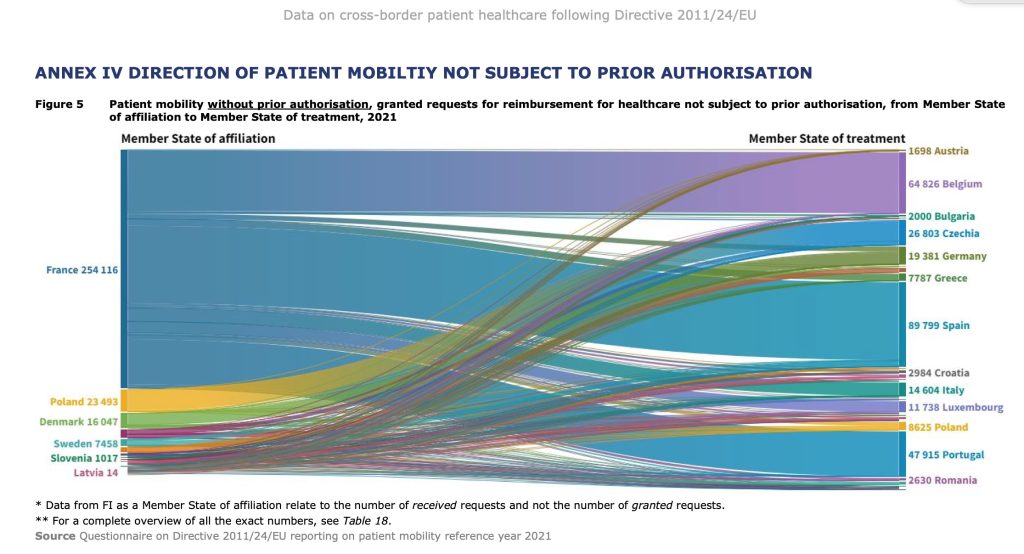According to the latest available figures, the cross-border oral healthcare is a drop in the bucket in terms of total volume of dental treatments provided at home.
Regulators. Dental regulators have to deal with it when the patient’s treatment was not correct and the follow-up of the treatment has to be organised once back in the home country. In the extreme cases the healing of injuries has even to be undertaken and the patient’s complains before the dental regulator of the host country has to be accompanied.
Commission. In June 2023 the European Commission has published the figures of cross-border healthcare that took place in 2021.
Though the Commission underlines that the collection of national figures provided the domestic administrations is not perfect and that data-quality is not hamonised, it appears that cross-border healthcare sought by EU patients remains, at constant rates, a tiny minority (less than 300.000 inventoried cares for a population of 447 millions of inhabitants).
Patients. Even though a directive has facilitated its use, in particulair for healthcare that is not subject to prior authorisation like for dental treatment, and even though the Commission and the European Court of Auditors encourage it, patients -according to the fgures- still prefer to seek care in their own country.

Tourism. In that perspective, medical and dental tourism exist (e.g. the main destination for Swedish patients seeking care outside their home country is not Scandinavia but Spain or Portugal) ; in the internal market however medical and dental tourism is not growing and it does not quit its traditional tiny size.
Countries. From the Commission’s report it appears that France stands out for having the highest number of patients seeking cross-border healthcare, mainly in Spain, Belgium and Portugal. France is followed – albeit to a much lesser extent – by Poland and by Denmark wherein 80% of cross-border care is of dental nature, some Danish patients seeking care in the next-door dental clinics of Germany.
